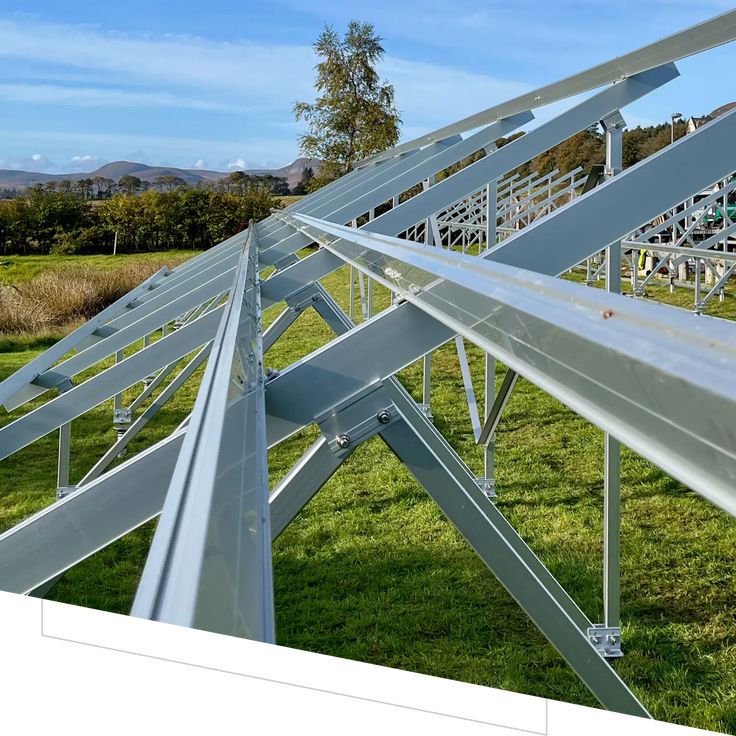A home solar power system is more than just the panels you see on a roof. It’s a sophisticated setup comprising several interconnected components that work in harmony to convert sunlight into usable electricity for your home. Understanding these key elements is essential for any homeowner considering the transition to solar energy.
1. Solar Panels (Photovoltaic Modules)
These are the most visible and fundamental parts of any solar system. Solar panels, also known as photovoltaic (PV) modules, are designed to capture sunlight and convert it into direct current (DC) electricity.
- Function: Each panel contains multiple photovoltaic cells that absorb photons from sunlight, causing electrons to flow and create an electric current.
- Types:
- Monocrystalline: Made from a single silicon crystal, these are typically more efficient and have a sleek, uniform black appearance.
- Polycrystalline: Made from multiple silicon fragments, they are slightly less efficient but often more cost-effective and have a bluer, mottled appearance.
- Thin-Film: Flexible and lightweight, these are less common for residential rooftops due to lower efficiency but can be suitable for specific applications.
2. Inverters
The inverter is the brain of your solar system, converting the DC electricity from your solar panels into alternating current (AC) electricity, which is the standard power used by all household appliances and the utility grid.
- Function: Converts DC to AC power.
- Types:
- String Inverters: The most traditional type, where multiple panels are wired together in “strings” and connected to a single central inverter. Cost-effective but performance can be affected if one panel in the string is shaded.
- Microinverters: Installed on each individual solar panel, they convert DC to AC at the panel level. This optimizes performance even if some panels are shaded and allows for panel-level monitoring.
- Hybrid Inverters: Designed for systems with battery storage, they can manage power flow between solar panels, batteries, the home, and the grid.
- Power Optimizers: A hybrid solution, these are placed on each panel to optimize DC power before sending it to a central string inverter, combining some benefits of microinverters with the simplicity of string inverters.
3. Mounting System (Racking)
The mounting system is the structural framework that secures your solar panels to your roof or to the ground. It’s crucial for ensuring the panels are safely and optimally positioned to capture sunlight.
- Function: Provides a secure, angled platform for the panels.
- Types:
- Roof-Mounted: The most common, using rails and clamps attached to the roof structure.
- Ground-Mounted: Panels are installed on a frame in your yard, ideal for homes with unsuitable roofs or ample land.
- Integrated/Shingle: Panels designed to blend seamlessly with roofing materials, offering a more aesthetic solution.
4. Electrical Wiring and Components
A solar power system requires a network of wiring and various electrical safety components to connect everything and ensure safe operation.
- Wiring: DC wiring connects panels to the inverter, and AC wiring connects the inverter to your home’s electrical panel and potentially the utility meter.
- Conduits: Protect the wiring from environmental damage.
- Disconnect Switches: Safety devices that allow the system to be manually shut down for maintenance or emergencies.
- Circuit Breakers: Protect the system from electrical overloads.
- Electrical Panel Upgrade: Sometimes, an existing electrical panel may need to be upgraded to handle the new solar electricity input.
5. Monitoring System
Modern solar systems typically include a monitoring system that allows homeowners to track their system’s performance in real-time.
- Function: Provides data on energy production, consumption, and system health.
- Access: Usually accessible via a mobile app or web portal, allowing you to see how much electricity your panels are generating, identify any issues, and track your savings.
6. Optional: Battery Storage
While not a mandatory component for all solar systems (especially grid-tied ones), battery storage is becoming increasingly popular.
- Function: Stores excess electricity generated by solar panels for later use, such as during the night or during power outages.
- Benefits: Increases energy independence, provides backup power, and allows for greater self-consumption of solar energy.
7. Optional: Backup Generator
For off-grid systems or hybrid systems in areas with frequent outages, a backup generator can provide an additional layer of energy security.
- Function: Kicks in to supply power if the solar panels and battery bank cannot meet demand.
- Fuel Types: Can run on propane, natural gas, or diesel.
8. Net Meter (for Grid-Tied Systems)
A bi-directional meter is installed to measure the flow of electricity both from the grid to your home and from your solar system back to the grid.
- Function: Facilitates net metering, allowing you to get credit for excess energy produced.
By understanding these core components, homeowners can better appreciate the technology behind their solar investment and engage more effectively with solar installers to design a system that perfectly suits their energy needs and home.

